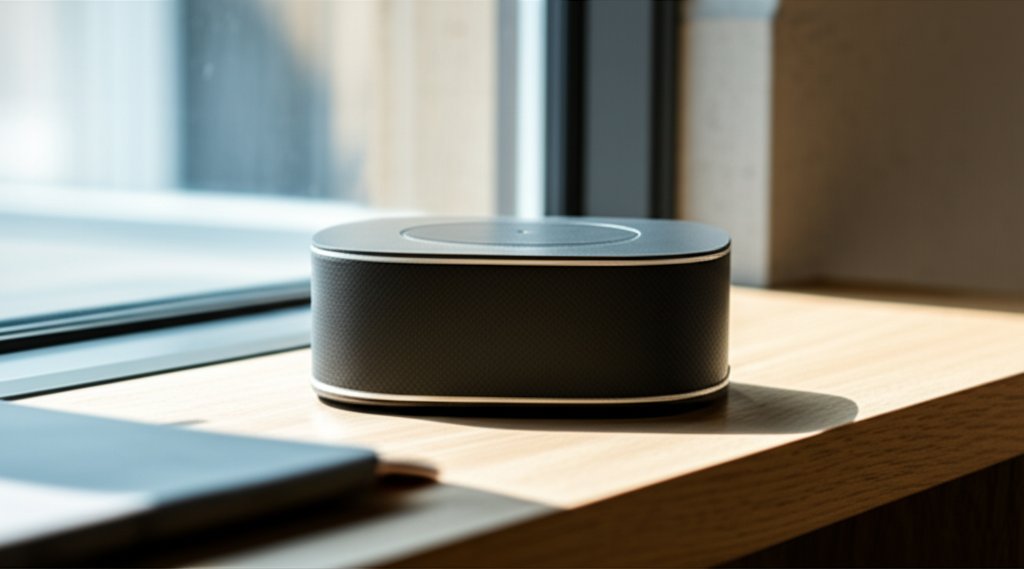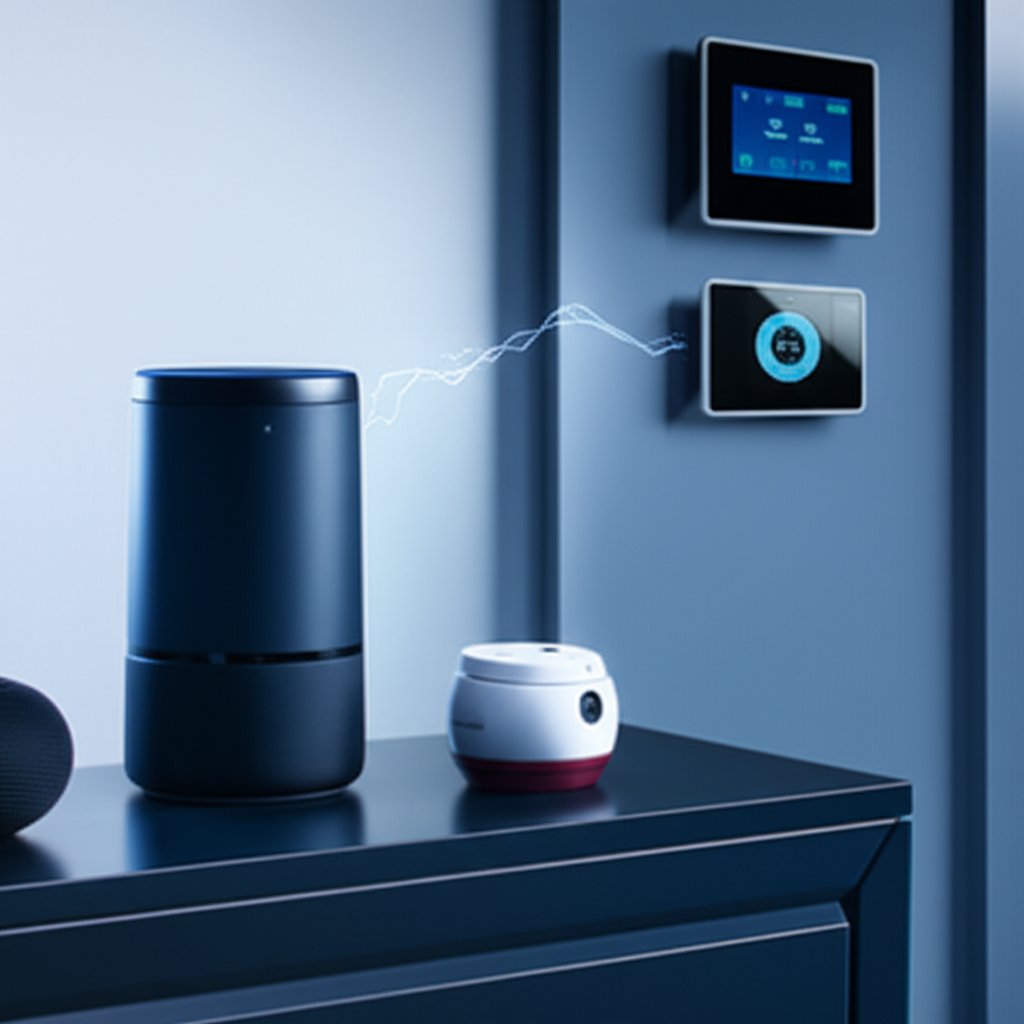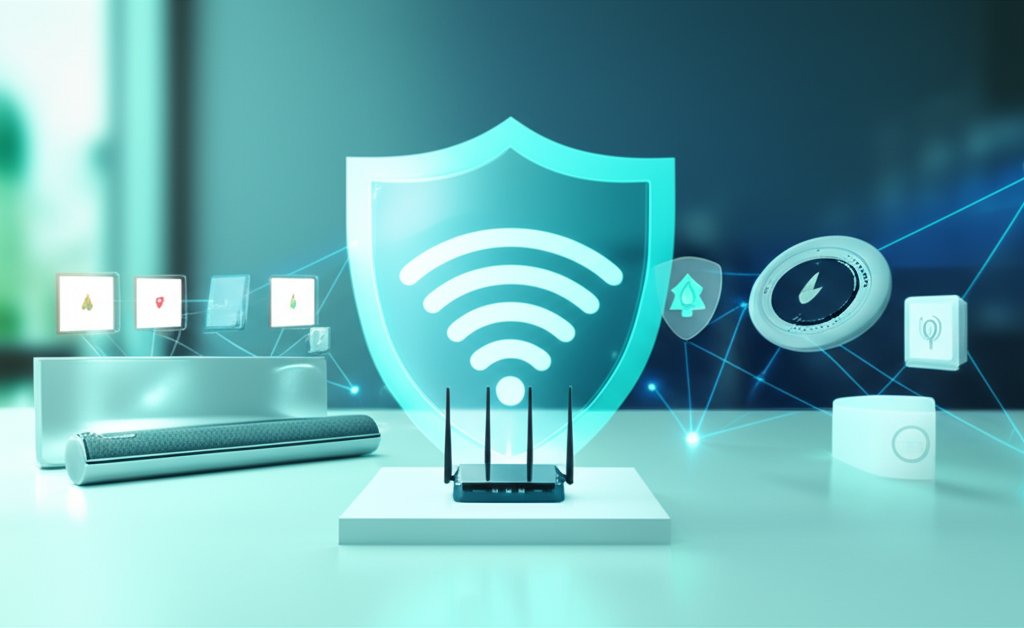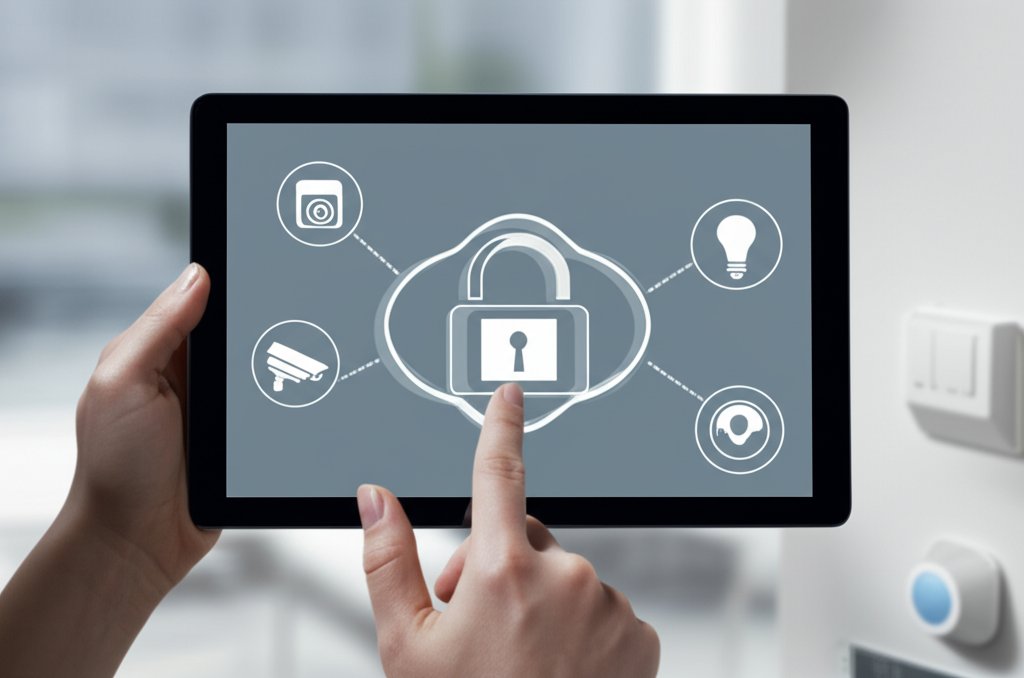Worried your smart home devices are listening in? Learn simple, non-technical steps to secure your smart speakers, cameras, and other IoT gadgets from eavesdropping and protect your privacy.
Stop the Spies: How to Secure Your Smart Home Devices from Eavesdropping & Boost Your Privacy
Ah, the smart home. It’s undeniably convenient, isn’t it? With a simple voice command, you can dim the lights, play music, or check who’s at the door. But with all that convenience, a nagging question often arises: Is my smart home secretly listening? It’s a valid concern, and one that frequently comes up in my work as a security professional.
When we talk about “eavesdropping” here, we’re not necessarily picturing a James Bond villain. Instead, we’re considering the potential for your devices to inadvertently capture audio or video they shouldn’t, collect data you didn’t intend to share, or even be accessed maliciously by a cybercriminal. As a security professional, I know firsthand the digital risks we all face. My goal here isn’t to be alarmist, but to empower you. Taking control of your smart home’s privacy isn’t as daunting as it might seem. We’ll walk through simple, actionable steps that anyone can understand and implement, ensuring your smart home stays smart without compromising your personal space. Let’s dig in and make sure your private conversations stay private.
Understanding the Eavesdropping Risk: How Smart Devices Can Listen In
It’s easy to dismiss privacy concerns with smart devices until you understand exactly how they might “listen” or collect data. Let’s break down the common ways your smart home gadgets could potentially eavesdrop, so you can clearly see the “why” behind our security recommendations.
Always Listening for “Wake Words”
Your voice assistants, like Alexa and Google Home, are designed to respond to commands. This means their microphones are constantly active, processing ambient audio. Don’t worry, they’re not typically sending all your conversations to the cloud. Instead, they use a local process to listen for “wake words” – phrases like “Hey Google” or “Alexa.” Only once that wake word is detected does the device typically begin recording and sending audio to the cloud for processing. It’s a clever design for convenience, but it’s crucial to understand this constant, local monitoring is happening.
Accidental Recordings & Data Retention
While wake words are usually required, devices can sometimes trigger unintentionally. A word that sounds similar, background noise, or even a line from a TV show can trick them into thinking they heard their cue. When this happens, a snippet of your conversation might be recorded and sent to the company’s servers. Many companies retain these recordings (anonymized or otherwise) for various reasons, often cited as “improving service” or “personalizing your experience.” It’s something you should be aware of when it comes to your smart home data collection habits.
Malicious Hacking & Unauthorized Access
This is where things get a bit more serious. Weak security practices can leave your devices vulnerable. If a cybercriminal gains unauthorized access to your smart speaker or camera due to poor smart home security, they could potentially activate microphones or cameras remotely without your knowledge. Imagine someone gaining unauthorized access to your smart camera’s feed; it’s a genuine cyber threat smart home users face, highlighting the need to secure your IoT devices from hackers.
Data Sharing with Third Parties
It’s not just the device manufacturer you need to think about. Many smart devices integrate with third-party services, apps, and platforms. Your agreements with these companies, often buried in lengthy terms and conditions, might allow them to share collected data for purposes like targeted advertising or market research. Your audio commands, viewing habits, or even location data could become part of a larger dataset without your explicit awareness.
Common Vulnerabilities That Put You at Risk
- Weak/Default Passwords: Leaving factory default passwords on your router or smart devices is like leaving your front door unlocked. Attackers know these defaults and exploit them quickly.
- Outdated Software/Firmware: Manufacturers regularly release updates to patch security vulnerabilities. If you don’t keep your devices updated, you’re leaving known weaknesses open for exploitation. This is a common smart home vulnerability.
- Inadequate Privacy Settings: Often, out-of-the-box settings prioritize convenience over privacy, collecting more data than you’d like. We’ll show you how to change these to better protect yourself.
- Overly Permissive App Permissions: Many smart device apps request access to information or features on your smartphone that they don’t truly need to function. Granting these unnecessary permissions can lead to broader data collection than intended.
Foundational Security: Protecting Your Entire Smart Home Ecosystem
Before diving into individual device settings, let’s establish a strong security foundation for your entire smart home. Think of these as the fundamental locks and alarms for your digital perimeter. These steps will secure your IoT devices and significantly reduce the overall risk of device eavesdropping across your network.
1. Strong Passwords & Multi-Factor Authentication (MFA)
This is the bedrock of digital security, but it’s astonishing how often it’s overlooked. For every smart device, every associated app, and every account, you must use unique, complex passwords. Forget “password123”! We’re talking about a mix of upper and lower case letters, numbers, and symbols, at least 12-16 characters long. Even better, use a password manager to generate and store them securely. Secondly, enable Multi-factor authentication (MFA) wherever it’s offered for your smart home accounts. MFA adds an extra layer of security, typically requiring a code from your phone in addition to your password, making it much harder for unauthorized users to gain access, even if they somehow compromise your password.
2. Secure Your Wi-Fi Network
Your Wi-Fi network is the backbone of your smart home. If it’s compromised, all your connected devices are at risk. Learn more how to secure your home network. Take these steps:
- Change Router Default Credentials: Update the default administrator username and password for your router. That combination printed on the sticker is a well-known vulnerability.
- Use Strong Encryption: Ensure your network uses strong encryption like WPA2 or, even better, WPA3. You can usually check and change this in your router’s settings.
- Create a Separate IoT Network: Consider setting up a separate “Guest” or IoT network specifically for your smart devices. This practice, known as network segmentation IoT, isolates your smart gadgets from your main network where your computers and sensitive data reside. If a smart device is ever compromised, the attacker can’t easily jump to your more critical devices.
3. Keep Everything Updated
Software and firmware updates aren’t just about new features; they’re primarily about security. Manufacturers constantly discover and patch vulnerabilities. If you’re not updating, you’re leaving your digital doors wide open. Whenever possible, enable automatic updates for your smart devices and their controlling apps. If automatic updates aren’t an option, make a habit of manually checking for and applying them regularly. Consistent firmware updates security is critical for protecting against newly discovered exploits.
Device-Specific Safeguards Against Eavesdropping
Now that we’ve laid a strong foundation, let’s look at specific smart devices and the targeted steps you can take to prevent them from listening in or capturing unwanted data. This is where we directly address prevent smart devices listening concerns.
Smart Speakers & Voice Assistants (Alexa, Google Home, Siri)
These are often the biggest concern for voice assistant privacy. You’ve got options:
- Mute Microphones: Most smart speakers have a physical mute button. Use it when you don’t need the voice assistant active. This physically disconnects the microphone, giving you peace of mind.
- Disable Hotword Detection: You can often disable the “Hey Alexa,” “Hey Google,” or “Hey Siri” hotword detection in the device’s app settings. This means you’ll have to manually activate the device (e.g., by pressing a button) to give a command, but it ensures it’s not constantly listening for its cue.
- Review and Delete Voice Recordings: Regularly check your privacy settings in the Alexa, Google Home, or Siri app. You can often review all past voice recordings and delete them individually or in bulk. This is a crucial step for secure Alexa privacy, Google Home privacy settings, and Siri privacy settings.
- Adjust Privacy Settings to Limit Data Use: Dive into the app’s privacy settings. You’ll often find options to limit how your voice data is used for “improving services” or “personalizing your experience.” Opt out of as much as you’re comfortable with.
Smart Cameras & Doorbells
These devices are inherently designed to capture video and sometimes audio, making their security paramount.
- Secure Access with Strong Passwords and MFA: As mentioned, this is non-negotiable. Use robust credentials and Multi-factor authentication smart home for your camera accounts.
- Encrypt Video Streams: Check your device’s capabilities. Many newer cameras offer end-to-end encryption for video streams, which scrambles the data so only authorized viewers can see it. Prioritize this feature for optimal smart camera security.
- Disable Unused Features: If your camera offers continuous recording but you only need motion detection, disable continuous recording. The less data collected, the better.
- Use Physical Covers for Indoor Cameras: For indoor cameras, consider physical lens covers (many come with them, or you can buy aftermarket ones) when you’re home and don’t need them active. Out of sight, out of mind, and out of stream.
Smart TVs
Many modern smart TVs are far more than just screens; they have microphones and track viewing habits.
- Disable Automatic Content Recognition (ACR): This feature often tracks what you watch across all inputs to gather data for advertisers. Turn it off in your TV’s privacy settings. Look for settings related to “viewing data,” “smart interactivity,” or “data services.”
- Review Microphone Settings: If your TV has voice control, check its settings. You can often disable the always-listening feature and choose to activate voice control only by pressing a button on the remote.
Other Smart Devices (Thermostats, Plugs, Appliances)
While they might not have microphones, these devices still collect data that can paint a picture of your home life.
- Review Specific App Privacy Settings: Every smart device comes with an app. Take the time to go through each app’s privacy settings and understand what data it collects and why.
- Limit Permissions: Only grant the app permissions that are absolutely necessary for the device to function. Does your smart plug really need access to your contacts or location 24/7? Probably not.
Smart Purchasing & Ongoing Vigilance
True IoT privacy starts even before you bring a device home, and it requires continuous attention. This proactive approach helps you secure your smart home from potential future threats.
Research Before You Buy
Don’t just grab the cheapest option or the one with the flashiest features. Do your homework: especially if you’re hunting Black Friday smart device deals.
- Check Manufacturer’s Privacy Policy: Yes, they’re often long and dense, but scan for key phrases about data collection, storage, and sharing. How transparent are they?
- Look for Reputable Brands: Prioritize manufacturers known for good security practices, regular updates, and responsive customer support. Longevity in the market and a history of addressing vulnerabilities are good indicators.
- Prioritize Security Features by Design: Look for devices that advertise strong encryption, multi-factor authentication, and robust security controls as core features.
Regular Audits of Your Devices
Your smart home isn’t a “set it and forget it” system. Periodically:
- Know What’s Connected: Use your router’s interface or a network scanning app to see all devices connected to your Wi-Fi. Recognize everything? If not, investigate.
- Review Permissions and Settings: Revisit device apps and settings every few months. Software updates can sometimes reset privacy preferences, or you might realize you no longer need certain permissions enabled. This is part of ongoing smart home security.
Secure Disposal of Old Devices
When it’s time to upgrade or discard a smart device, don’t just toss it. Always:
- Factory Reset: Perform a factory reset to wipe all your personal data, settings, and account information from the device. This is crucial before selling, donating, or recycling.
- Unlink from Accounts: Remove the device from any associated cloud accounts (e.g., your Alexa account, Google Home app).
Conclusion
Living in a smart home offers incredible convenience, but it should never come at the cost of your privacy. By understanding the real risks of device eavesdropping and implementing these practical, non-technical steps, you can create a truly secure smart environment. Remember, proactive security isn’t about fear; it’s about empowerment. It’s about making informed choices and taking control of your digital life.
A smart home can absolutely be a secure home, but it requires a few mindful practices on your part. You’ve got the tools and knowledge now. Don’t wait; why not start implementing these tips today and give yourself the peace of mind you deserve?









